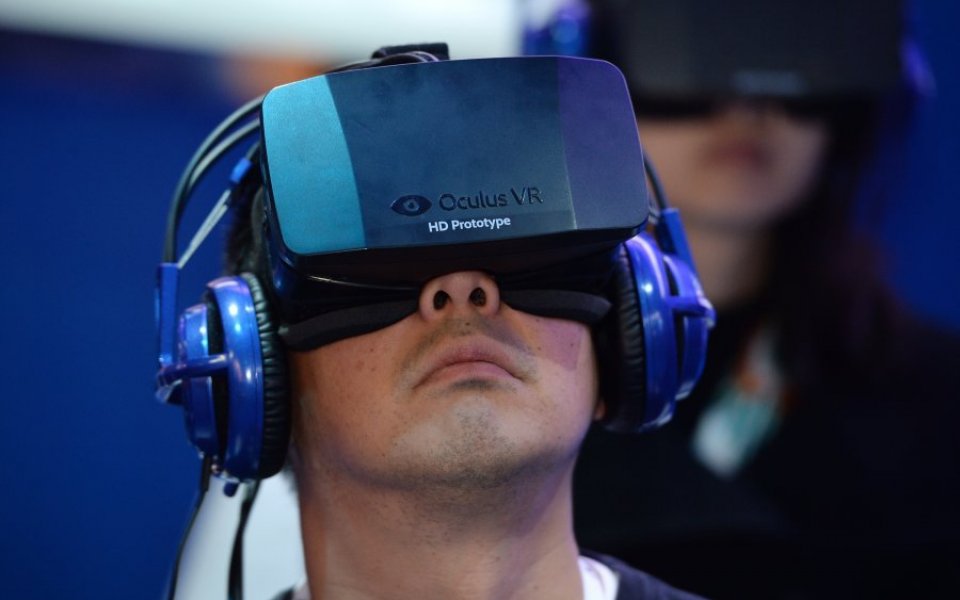Virtually there: How VR will change the workplace

Like driverless cars, virtual reality has been a long time coming. With its origins in the sixteenth century, virtual reality (VR) techniques were once limited to theatrical trickery and the “girl-to-gorilla” variety illusions found in carnival sideshows.
But with Oculus Rift on sale from March, the technology may finally be entering the mainstream. With psychiatrists at the University of Louisville using VR in cognitive behavioural therapy to treat patients with anxieties about public speaking or flying, its applications extend far beyond gaming and entertainment. Here’s how it will change things in the coming years.
DATA VISUALISATION
The potential to create 3D data visualisations, with physical and even kinaesthetic representations which can be touched and manipulated, is extremely exciting.
Big changes to stock-market data visualisation, in particular, may be round the corner. With algorithms performing trades in fractions of seconds, and quantum computation not far off, projects such as Quant VR’s Visual Order Book could help to visualise data more quickly. “It’s really the first time that you can actually see the stock market from the point of view of an algorithm,” co-founder Eric Greenbaum told TechRepublic.
Another product, Alpha Canvas, allows users who don’t know how to code to draw a filter which will perform like an algorithm.
“3D graphs which represent stock prices over a day or over a few hours fundamentally fail in their ability to represent what’s actually happening in the market,” he said.
PRODUCT DEVELOPMENT
VR promises to change the landscape of product development. Visual representations of prototypes can be produced quicker and cheaper than physical models, and allow developers to identify problems at earlier stages. Caterpillar, for example, used a virtual prototyping system to design its 914G WheelLoader.
“Though 3D printers are in many ways revolutionising rapid prototyping, VR allows you to design and vulgarise a finished product,” says William McMaster, head of VR at Visualise. “You can’t feel that product (yet), but you can see it, photo-realistically and with complete interactivity; as though it’s right in front of you.”
IMMERSIVE EXPERIENCES
One of the most interesting frontiers for virtual reality is in “try before you buy” experiences. “Hospitality will never be the same,” Shawn DuBravac, chief economist for the Consumer Technology Association told Fortune. “Before booking a cruise you’ll be able to walk into the cabin and tour the entire ship. You’ll no longer be surprised when you walk into a hotel room because you’ll have already experienced it in a VR setting.”
And VR has the potential to revolutionise interactive tutorials in any industry. Boeing used augmented reality as far back as 1997, with helmets showing assemblers exactly where each wire needed to go. Recruitment and training programmes stand to benefit significantly, with processes being made more realistic and at a reduced cost. “Imagine a presentation where you take your team to a different location. Imagine not having to attend meetings internationally,” says McMaster. “VR can create a mediated interactive space where anyone from across the world can interact; where you’ll be able to see every detail of facial expression and body language. Skype will seem like morse code.”
Visualise has worked with the Army to create a VR experience to drive recruitment by throwing potential candidates into authentic military scenarios. “Skills in customer service, risk assessment, construction and maintenance of technical equipment can all benefit from VR training where the stakes are low and immersion is high,” he says.
______________________________________________________________________________________
CARDBOARD CAMERA
Free App
Relive your precious moments in three dimensions with this virtual reality photography app. Designed to be used with Google Cardboard glasses, ambient noises and speech are also captured. Combined with the panoramic perspective, you can see your snaps in a whole new way. The effect is not perfect, with blur in some areas, but it’s a promising start.